On our way to Antarctica, steering south.
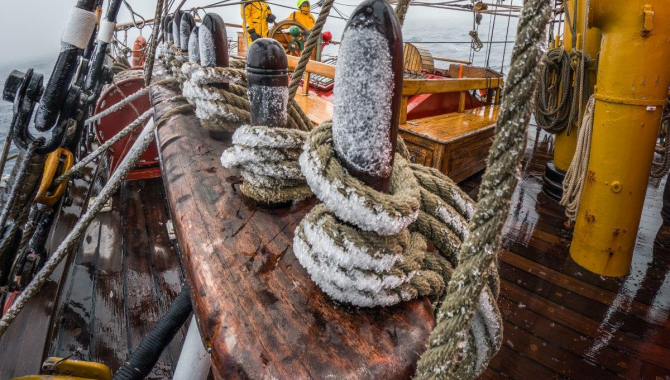
The gusts and strong winds from last evening abate during the night, but the clear skies gradually become foggier and foggier.
The sea watches have started, and just for a good beginning, during the night and under dark, cold, wet, and low-visibility conditions, we have started setting sail.
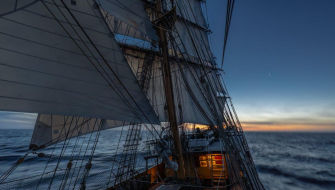
The temperatures are just above freezing, but the mist, making the rig wet and then evaporating as the day starts, has made for ice to grow everywhere. Europa carries a “white rig” in the morning. The frozen fog has covered both the standing and running rigging.
Under these circumstances, climbing aloft and unfurling the rest of the canvas to set it right away after breakfast proved to be more challenging than usual. Gloves are necessary, and to work out the gaskets, first the ice covering them has to be cleared. The same goes for grabbing shrouds and stays that lay under a layer of ice crystals. Pieces of ice fly from aloft, hitting the decks below.
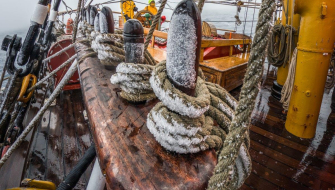
But then, the fog dissipates, and the sun shines in the afternoon and evening. The wind veers to a light northwesterly, and the seas are calm. We make way south-southwest, high in the breeze, braced close-hauled, but at a speed of just over 3 knots. Chinstrap penguins porpoise around us, but eventually overtake the ship on their foraging trips offshore from their small colonies south of South Georgia.
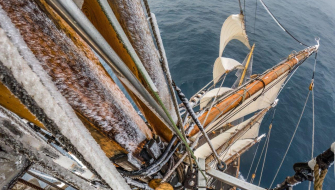
After crossing the ice fields of growlers, bergy bits, and icebergs that seem to shield the jagged southern coasts of South Georgia, today, for most of the journey, we sail on clear waters. But apparently, not for much longer. Now we approach areas with lots more ice, not just the odd piece we came across during the day. By the change of watch after dinner, the sea ice edge lays 135 nautical miles right ahead. But closer, we will come across iceberg fields.
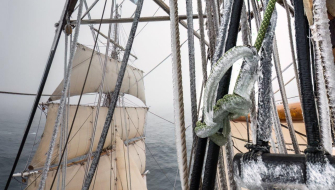
As long as westerlies blow, we can’t sail in that direction, where our goal lies at the possible way into the Weddell Sea. For now, the Europa can still sail southwards. Expectation is high to see when we end up in the ice and how we will deal with it. Anyway, the mileage done from departure has been 114 nautical miles, 780 nautical miles left in a sort of straight line to the tip of the Antarctic Peninsula.
During the night, and as forecasted, the westerly wind picks up to about 20 knots, as we keep steering high on it on a 235º course. But it is not just the wind that has changed—the clear skies began to fog up again. Now, under those conditions and with the help of the newly rigged ice-lights at the tip of the bowsprit, a sharp lookout is needed, furthermore sailing so close to the icy waters between the Scotia and Weddell Seas.